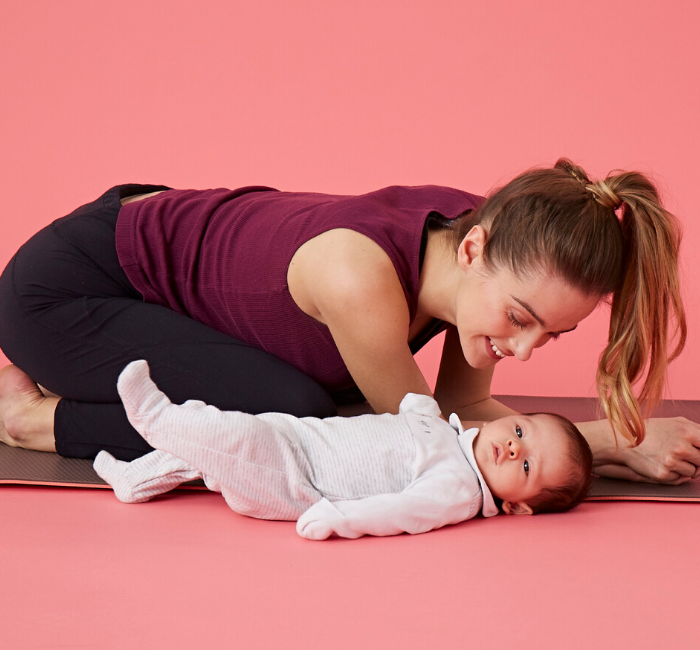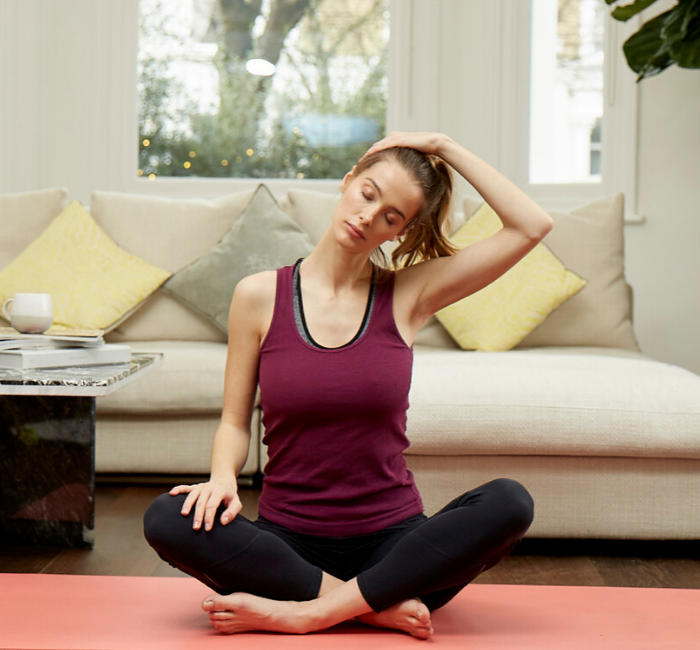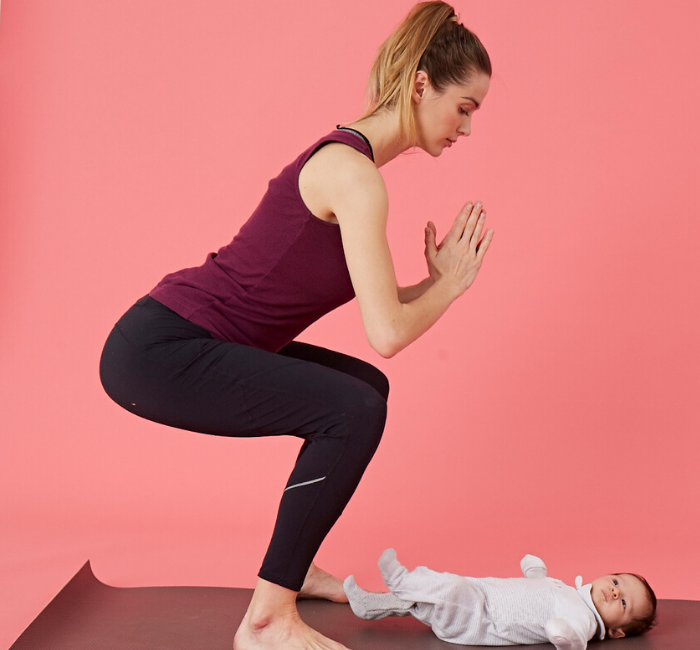Don’t Rush It: Try This Safe Post Pregnancy Workout at Home

When can I start exercising?
You’ve had your baby, you’ve had your 6-week postnatal check so you’re all set to jump onto YouTube and resume your favourite yoga workouts. What could possibly go wrong? Believe it or not, even a beginner’s yoga class can do more harm than good if you start exercising before your postnatal body is ready.
Give your body time to heal
Even if you’ve stopped bleeding, any stitches you’ve had vaginally or abdominally have healed nicely, and you feel ready to start doing ‘proper’ exercise, it’s important to understand that critical healing is still taking place. You might not see it, but some tears and incisions take longer than 6 weeks to properly heal, so it’s important to avoid movements that are too vigorous.
Take Extra Care After a C-section
For C-section women, the connective tissue of your stomach has only regained 51 – 59% of its tensile strength (ability to withstand resistance)* by 6 weeks. (This hasn’t been measured in women who haven’t had a C-section, but it’s likely to still be much weakened.) The connective tissue is still not up to full tensile strength by 6 or 7 months. This means that doing exercises where you can’t fully engage your stomach muscles could increase your risk of weakening this area, rather than strengthening it. And if you have a diastasis (stomach muscle separation), you increase your risk of a hernia.
Build strength in your pelvic floor gradually
Regardless of how you’ve given birth, your pelvic floor has had the weight of your uterus and baby bearing down on it, so it’s weak and injured and needs to be re-strengthened carefully. Activities such as running or jumping place a lot of pressure on your pelvic floor and this can lead to leaking. You might experience this as leaking wee, but also not being able to hold poos or farts in.

Your hormones can make you more prone to injury postpartum
You will also have elevated levels of certain hormones such as relaxin in your body, which can affect your joint stability, making you more prone to injury. It is thought that relaxin can remain in your body for months after birth and even longer if you’re breastfeeding.
This means that exercises which require a sudden change in direction or have a lot of impact going through the joints can increase your risk of straining ligaments or tendons.
In the biamove section of the Biamother app, you’ll find workouts and exercise videos demonstrating the exercises you can begin soon after birth. Here are some of the basic guidelines to follow:
Strengthen From the Inside Out.
As well as giving your pelvic floor adequate time to heal before you start doing exercises such as running, which places pressure on it, it’s important to strengthen this area by doing pelvic floor exercises every day.
Strengthen Your Deep Core Muscles.
First, practise diaphragmatic breathing – this is the foundation of core strength, then implement exercises such as pelvic tilts and clams and make sure you’re integrating your breathing and pelvic floor contractions too. Forget about exercises that work your six-pack muscles and your side stomach muscles – it’s your inner stomach muscles that need the most strengthening right now.
Avoid Exercises and Movements Which Cause You to Hold Your Breath
As well, avoid exercises where you must bear down against your stomach muscles and pelvic floor. This commonly occurs when you lift a heavy weight (your baby counts as a heavy weight!) from the ground, but you might also do this if you try to do planks, or when you sit up in bed. Always breathe out during these movements and simultaneously engage your pelvic floor.

Stick to exercises which make you better equipped for everyday parenthood.
As well as your pelvic floor and stomach muscles, it’s important to target your glutes (bum muscles) as these are underused during pregnancy. Squats are a great exercise that also strengthen your legs. Strengthening the muscles around your spine, pelvis and shoulders will also help you. Hip bridges and resistance band rows or pull-outs are recommended.
What If I Don’t Have a Resistance Band?
If you don’t have a resistance band, making small circles with your hands and your arms outstretched are an effective alternative.
Avoid Impact.
You don’t need impact exercises to get sweaty and strengthen your body.
Follow Expert-Led Workouts.
Make sure any workouts you do online or in person are held by pre and postnatal experts.
It’s also important not to do too much during the first 6 weeks.
Take slow walks for short periods of time and build these up gradually. Rest with your feet up if you notice an increase in bleeding.
What to consider if you’ve had stitches.
Do what you can to keep your knees together if you’ve had vaginal stitches as it’s not unheard of for your wound to reopen several weeks after birth. Try to avoid long periods of carrying your baby or lifting things that are heavier than your baby, even if you feel like you can. Instead, focus on your pelvic floor exercises, exercises that focus on core system integration (learning how to get your core muscles and pelvic floor working together with your breathing) and gentle stretching to release tension in your back and shoulders.
Remember, you’re only as strong as your weakest link. After pregnancy, this is mainly your stomach muscles and pelvic floor. Get those areas really strong before you introduce other exercises and activities.

